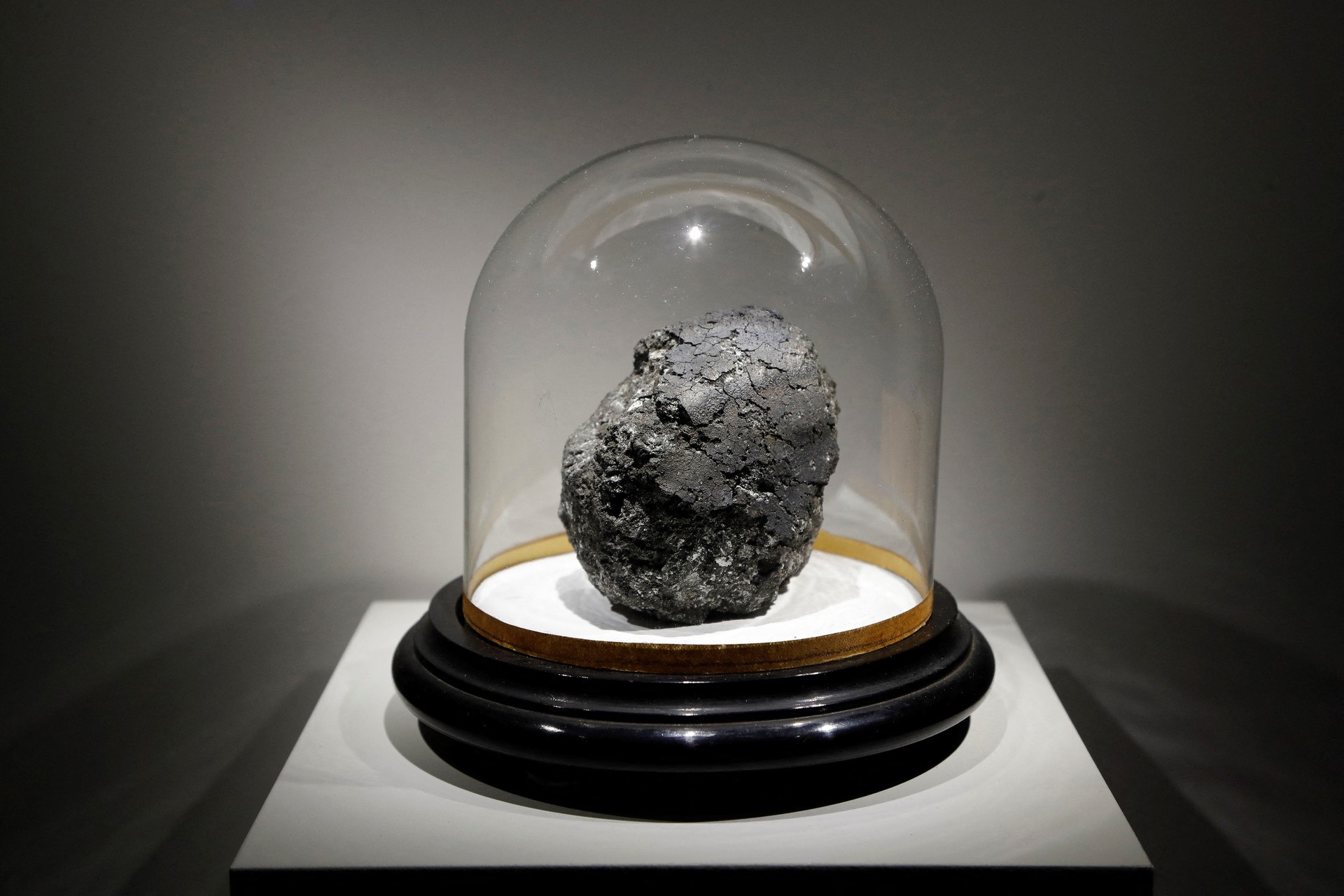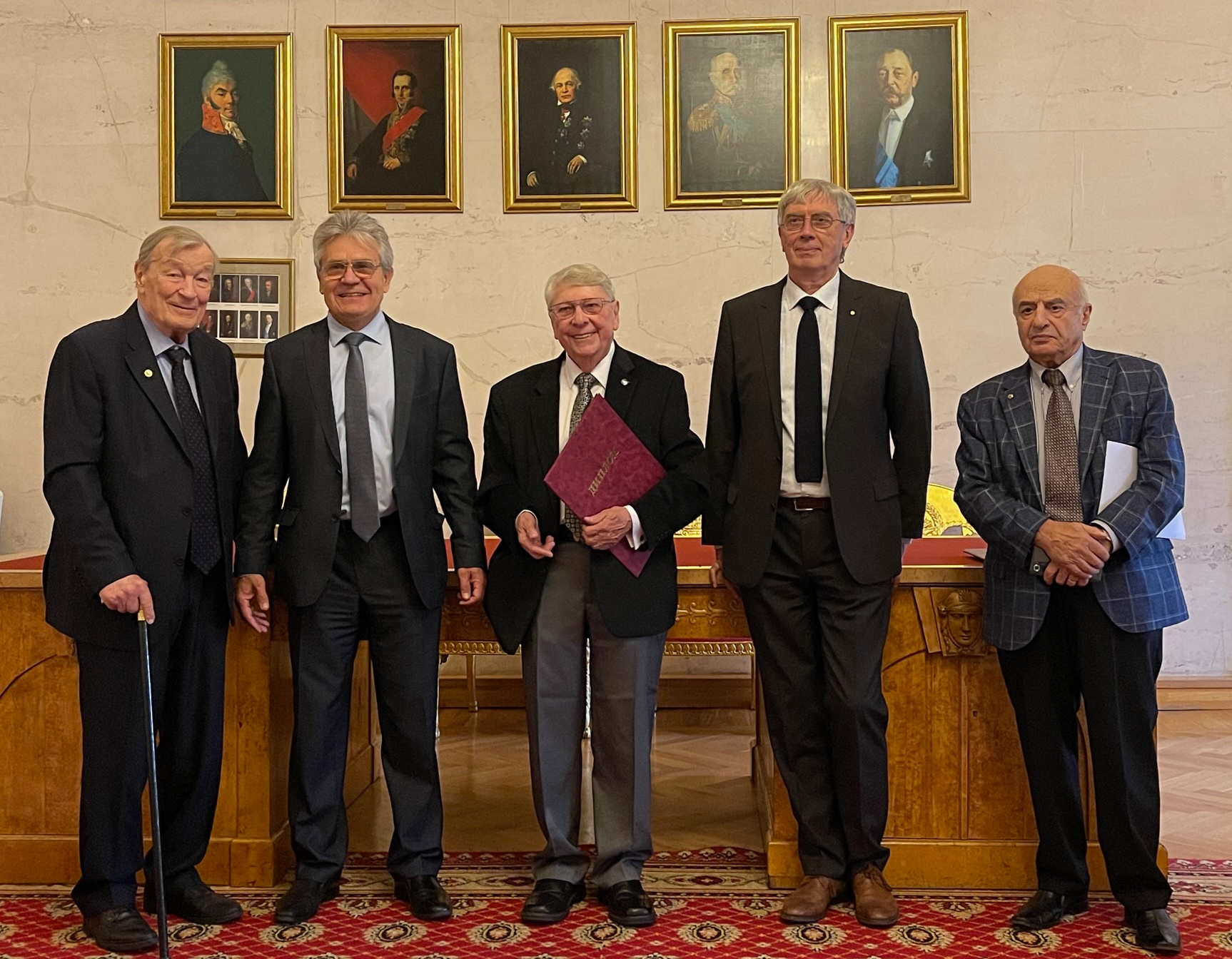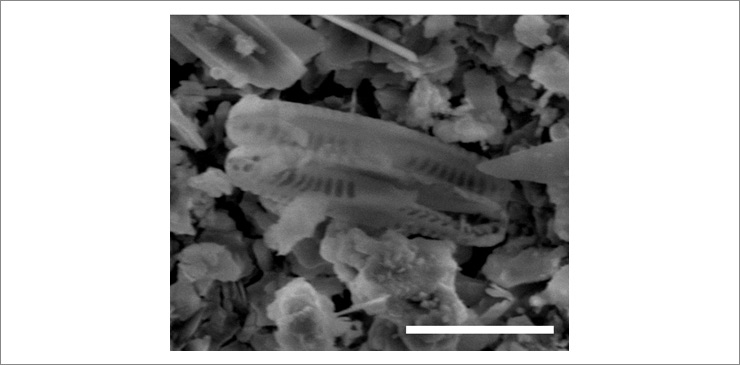JINR scientists examine meteorites with fossilized microorganisms
Media, 14 February 2022
JINR scientists with scientists from Russia and the United States are carrying out a complex research of the meteorite, which fell in 1864 in France near the village of Orgueil. This meteorite has been studied well a long time ago, however the scientific group managed to discover the unique findings, which among other things suggest that life on Earth was brought from space.
The monograph “The Orgueil Meteorite Microfossil Atlas” was published by JINR in 2021. The book consists of four-year work materials studying fossilized microorganisms – microfossils – on chips of the meteorite. The study was carried out by LRB JINR Astrobiology Sector staff members under the direction of a famous palaeontologist and Academician of the Russian Academy of Sciences Alexey Yurievich Rozanov, who is considered to be one of the founding fathers of bacterial palaeontology. Thanks to his studies, the prevailing scientific belief of bacteria that cannot fossilize was changed.
 TESCAN VEGA 3 scanning electron microscope and sample of under study meteorite.
TESCAN VEGA 3 scanning electron microscope and sample of under study meteorite.
Scientists do no find microfossils on all classes of meteorites. According to the co-author of the monograph and a junior researcher of the LRB Astrobiology Sector Anton Rumin, scientists discover remains of ancient organic matter in large quantities on meteorites called carbonaceous chondrites. Such meteorites include the Orgueil meteorite, which has been studied in the LRB Astrobiology Sector since 2017. The meteorite is one of the most ancient ones and has a cometary origin. It is comparable to the age of the Solar system based on the start of its formation.
Scientists prepare samples before the research. Tiny samples of meteorite, which are stored in sterile conditions, are cleaned from possible contamination with modern organic matter. Tools and tables are treated with a torch flame.
With the help of a scanning electron microscope employees of the Astrobiology Sector have found separate and in clusters filamentous, coccoid bacteria, rod form, eukaryotes, including diatoms, prazinophytes, and other fossilized microorganisms on fragments of the Orgueil meteorite. Researchers have used the energy-dispersive X-ray microanalysis method to study the elemental composition of the discovered fragments.
 Orgueil meteorite AFP © FRANCOIS GUILLOT
Orgueil meteorite AFP © FRANCOIS GUILLOT
“We have found a lot of organic matter in the class of carbonaceous chondrites, as well as amino acids, including proteinogenic and nucleic bases. Some of these bases decompose very fast after the death of organisms, and some of them can exist for a long time — we have found the second category in chondrites,” the expert said. “Meanwhile, some examined meteorites have fallen quite recently: Orgueil in XIX, Murchison in XX century, and Aguas Zarcas in 2019. Among the organic matter found, there is one that exists in sedimentary rocks. Relying on the existing data we may assume that, firstly, it is fossil remains, and secondly, microorganisms were formed there before the fall.
We might suppose that these meteorites have a terrestrial origin, so they were knocked by an asteroid fall one day and ended up in space. However, the isotopic composition of these meteorites demonstrates that they are not of the terrestrial or lunar origin. For example, there are a large number of structures in Orgueil, which morphologically correspond to bacteria and eukaryotic algae. Their density is very large: from one and a half to two thousand pieces per 1 cubic millimetre. They could not expand in such quantities after the fall. Soil samples were taken at the crash site, but specialists did not find anything like that.”
In this regard it is worth mentioning Richard Hoover — one of the co-authors of the monograph. American professor and famous scientist, head of the Astrobiology Laboratory in Athens State University has been actively working with JINR specialists for a long time. In July 2021, he was awarded the title “Honoris Causa” in the Astronomy speciality by the Physical Sciences Department of the Russian Academy of Sciences. The Russian Academy of Sciences awards the degree to especially outstanding foreign scientists.
 In the photo from left to right: Alexey Rozanov (the Borissiak Paleontological Institute of the Russian Academy of Sciences) Alexander Sergeev (RAS President), Richard Hoover (Athens State University), Boris Sharkov (JINR), Edmund Akopov (NIISI RAS)
In the photo from left to right: Alexey Rozanov (the Borissiak Paleontological Institute of the Russian Academy of Sciences) Alexander Sergeev (RAS President), Richard Hoover (Athens State University), Boris Sharkov (JINR), Edmund Akopov (NIISI RAS)
The nitrogen content in organic matter has confirmed the antiquity of Orgueil microfossils. Compounds containing nitrogen are destroyed very quickly after the death of the organism. However, some amino acids continue existing in them for a very long time. These amino acids, including proteinogenic, have been found in Orgueil. Meanwhile, the percentage of amino acids is very small: several parts per million.
The found fossil microorganisms existed in an aquatic environment. This is shown by framboids found on the fragments of Orgueil. Framboids are balls consisting of many crystals. They assemble in ordered clusters as liquid water is necessary for their formation. Most carbonaceous chondrites contain 10% and more of mineral-bound water. However, there were reservoirs with liquid water when life existed on their parent bodies. Liquid water is necessary for the vital activity of microorganisms.
 Diatoms in the Orgueil meteorite. The scale of the ruler is 10 micrometres
Diatoms in the Orgueil meteorite. The scale of the ruler is 10 micrometres
The remains of fossil bacteria have the same shape that they had in their lifetime. But they may consist of elements replaced over time. They are often replaced with oxid or iron sulfide on the meteorite fragments. It depends on the conditions in which they were located, whether the environment was oxygen or oxygen-free.
It is interesting to note that magnetotactic bacteria with magnetosomes have been found in Orgueil. Magnetosomes are a series of magnetite crystals that line up along the axes of the magnetic field. This shows that the bacteria must have originated on the object that generates its magnetic field.
At present, scientists of the Sector are collecting material for a new book. They are focusing on the search for fossilized life forms in other world-famous carbonaceous chondrites, such as Aguas Zarcas that fell in Costa Rica in 2019, and Murchison from Australia, which fell on Earth in 1969. And there are already the first results. Despite the fact that the Orgueil meteorite has more diverse species of microorganisms, scientists have found some forms in Murchison, which the Orgueil meteorite does not have.
